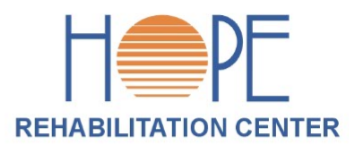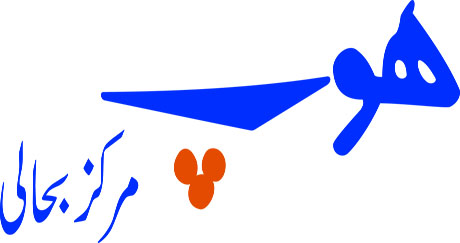| AFO | Ankle Foot Orthosis |
| AK | Above-knee |
| Alignment | The degree to which the parts of a prosthesis or orthosis fits into the correct position with the user’s body and with one another. |
| Amputee | A person whose limb or part of limb has been amputated |
| Ankle foot | Artificial foot having a hinge moveable like an ankle movement |
| Assistive devices | Also known as technical aids, assistive equipment or assistive technology, are items that can directly enable people with disabilities to participate in the activities of daily life. |
| BK | Below-Knee |
| Brace | See orthosis. |
| Caliper | See orthosis. |
| Caries spine | Tuberculosis of the vertebral bodies of the spine. |
| CBR | Community-based rehabilitation. |
| Cerebral Palsy | It is caused by damage to one or more specific areas of the brain, usually occurring during fetal development, or during infancy. It can also occur before, during or shortly following birth. |
| CP Chair | Required for cp children for proper posture |
| CP | See cerebral palsy. |
| Disability | A disability is any restriction or lack (resulting from impairment) of ability to perform an activity in the manner or within the range considered normal for a human being. |
| Down’s syndrome | A common genetic disorder in which a child is born with forty-seven rather than forty-six chromosomes, resulting in developmental delays, mental retardation, low muscle tone, and other possible effects. |
| Electrotherapy | Medical therapy using electric currents. Also called electrotherapeutics. |
| Endoskeletal prosthesis | A lower-limb prosthesis whose strength comes from a central tube, or pylon, on the inside of it. A covering usually made of foam or polypropylene provides the shape and appearance of the prosthesis. |
| Exoskeletal prosthesis | A prosthesis in which the shank is shaped like a leg and forms the outside of the prosthesis. |
| Foot-drop | The condition that causes a foot to drop downward so that only the toes touch the ground when the foot is lifted. It results from the effect of gravity on a weak ankle. |
| Gait | Pattern of walking |
| Handicap | A handicap is a disadvantage for a given individual, resulting from an impairment or a disability, that limits or prevents the fulfillment of a role that is normal (depending on age, sex, and social and cultural factors) for that individual. |
| Hip Disarticulation | HD is the surgical removal of the entire lower limb at the hip level. A traditional hip disarticulation is done by separating the ball from the socket of the hip joint, while a modified version retains a small portion of the proximal (upper) femur to improve the contours of the hip disarticulation for sitting. |
| HKAFO | Hip Knee Ankle Foot Orthosis |
| Impairment | Impairment is any loss or abnormality of psychological, physiological or anatomical structure or function. |
| Insert | A prosthetic liner in contact with the skin |
| KAFO | Knee Ankle Foot Orthosis |
| Keel | A solid piece, located in the central part of a prosthetic foot, around, which the whole foot is moulded. |
| Levels of amputation | sites of surgical removal of limb |
| Mental retardation | Mental retardation is a developmental disability that is marked by lower-than-normal intelligence and limited daily living skills. Mental retardation is normally present at birth or develops early in life. |
| Modular | Made of a number of smaller, units (modules) which can be assembled in a workshop to make a complete device. Each module is interchangeable with other modules having the same or similar function |
| Myoelectric hand | An artificial hand, which uses electrodes to pick up muscle contractions in the stump, using these for movement. |
| NGO | Non-Governmental Organization |
| Orthosis | An orthopedic appliance or apparatus used to support, align, prevent, or correct deformities or to improve the function of movable parts of the body. Orthoses are also called braces or calipers. Plural orthoses |
| Orthotics | Related to the field of orthoseis |
| Para walkers | Frame like assistive devices used by those having both legs paralyzed. |
| Physiotherapy | The treatment of disease, bodily defects, bodily weaknesses or injury by physical means, such as massage or exercises, rather than by drugs |
| Polio | Abbreviation for poliomyelitis, (also infantile paralysis) an acute and sometimes devastating disease caused by a virus. Man is the only natural host for polio virus. The virus enters the mouth and multiplies in lymphoid tissues in the throat and intestine. Small numbers of virus enter the blood and go to other sites where the virus multiplies more extensively. Another round of viremia (virus in the bloodstream) leads to invasion of the central nervous system (CNS), the spinal cord and brain, the target sites struck by the virus. |
| POP | Plaster of Paris |
| Prosthesis | A device, which replaces a missing body part to restore its function and appearance, such as an artificial limb. Plural prostheses |
| PTB | Patellar-Tendon-Bearing |
| PVC | Polyvinyl chloride |
| Pylon | See endoskeletal prosthesis. |
| Rehabilitation | Rehabilitation includes all measures aimed at reducing the impact of disabling and handicapping conditions and enabling the disabled and handicapped to achieve “Social Integration”. This aim can never be achieved if different professionals work in isolation. So it is of paramount important that all professionals responsible for the rehabilitation of disables, work in close collaboration as a “Team”. |
| Resins | a resin having a polymeric structure, a glassy thermoplastic; can be cast and molded or used in coatings and adhesives |
| SACH foot | ‘Solid Ankle Cushion Heel ‘ type of foot. |
| SCI | Spinal-Cord Injury |
| Scoliosis | A sidewise curve in the spinal column. |
| Shank | The structural member that connects the foot-ankle assembly of a lower-limb prosthesis to the socket or the knee unit. The primary purpose of a shank is to transfer the load of body weight to the foot and the ground surface. |
| Short wave diathermy | The therapeutic elevation of temperature in the tissues by means of an oscillating electric current of extremely high frequency like use of shortwave frequency electromagnetic waves |
| Socket | The portion of an artificial limb which comes in contact with a stump. It is shaped to hold the stump. |
| Splint | See orthosis. Small orthoses, especially for upper extremities, are also called splints. |
| Stump | The remaining portion of an amputated limb, which comes into contact with an artificial limb. |
| Syndrome | An abnormal condition or disease that is identified by an established group of signs and symptoms. |
| TD | Terminal Device meaning the artificial hand or artificial foot in a prosthesis |
| Team | All professionals responsible for the rehabilitation of disables work in close collaboration as a “Team”. Professionals include physician or surgeon, orthotic or prosthetic professional, physiotherapist, occupational therapist, nursing staff and social worker. |
| Thermoplastics | A type of plastic, which becomes soft on heating as many times as required. |
| Transpelvic amputation | It is the removal of the entire lower limb, plus a portion of the pelvic bones. |
| Ultrasound therapy | A mode of electrotherapy in which ultrasound waves are used externally to treat some ailments. |
| Walkers | Types of assistive devices used to assist or learning walking. |
| WHO | World Health Organization |
About Hope Rehabilitation Center
Hope Rehabilitation Society is welfare (Not for Profit Organization) body established to transfer the latest artificial limbs (orthotics and prosthetics) technology in Pakistan so that the quality of rehabilitation services be improved.
Contact info
- HOPE Rehabilitation Center 870-B, Faisal Town. Lahore, Pakistan
- +92 42 35177791
- +92 304 5177790
- +92 334 5177790
- info@hope.org.pk
Follow US
Opening Hours
Monday | 09:00 am – 09:00 pm |
Tuesday | 09:00 am – 09:00 pm |
Wednesday | 09:00 am – 09:00 pm |
Thursday | 09:00 am – 09:00 pm |
Friday | 09:00 am – 09:00 pm |
Saturday | 09:00 am – 09:00 pm |
Sunday | Closed |

